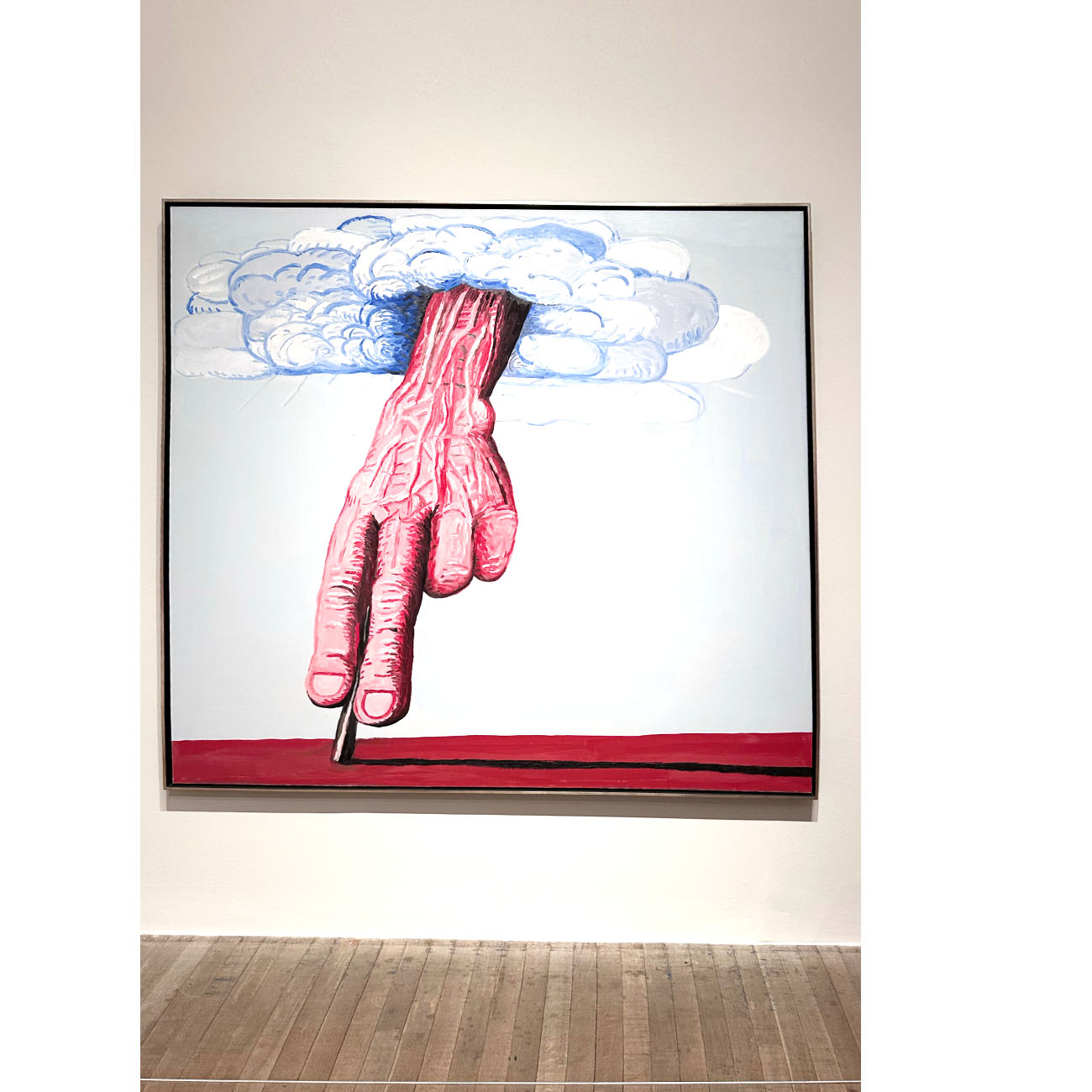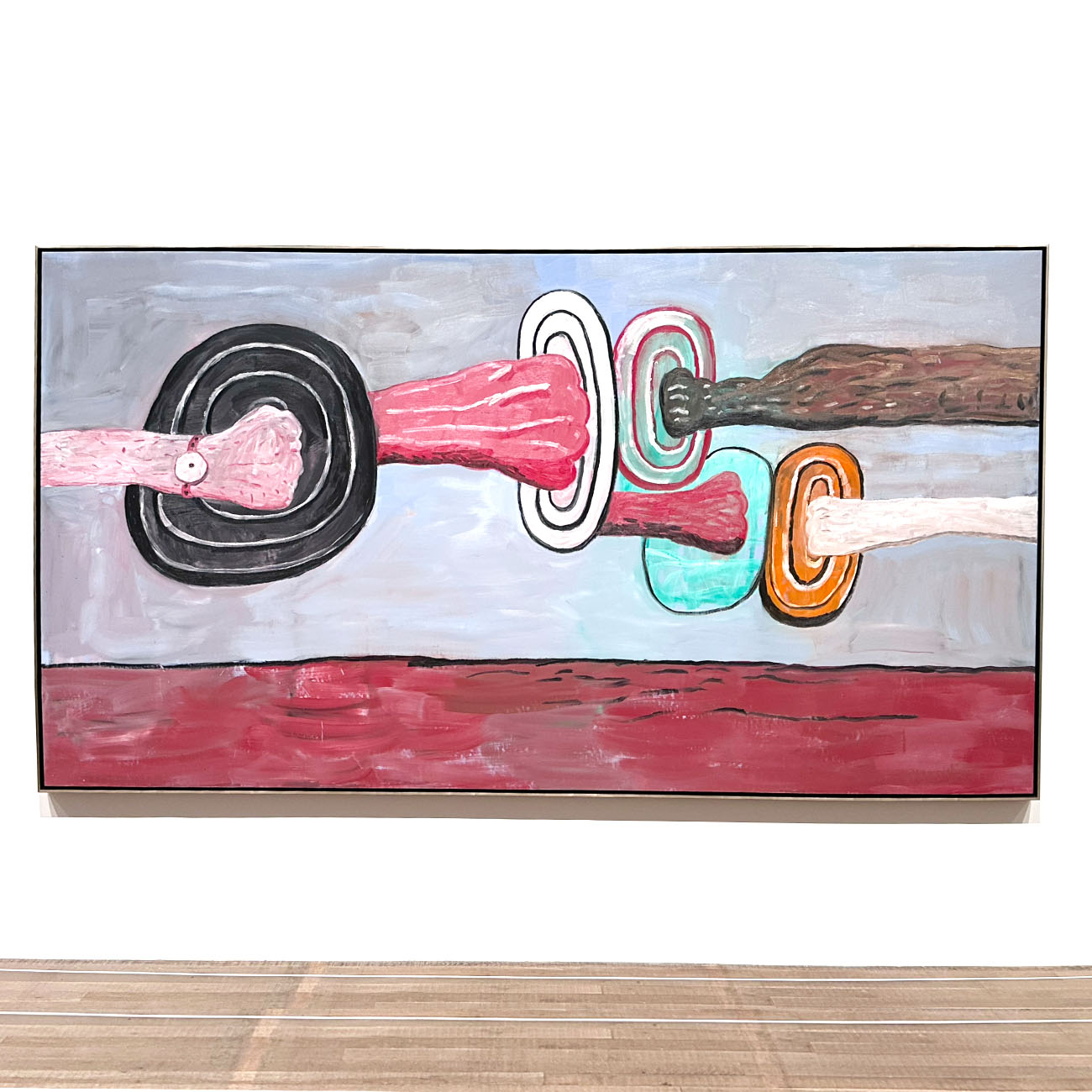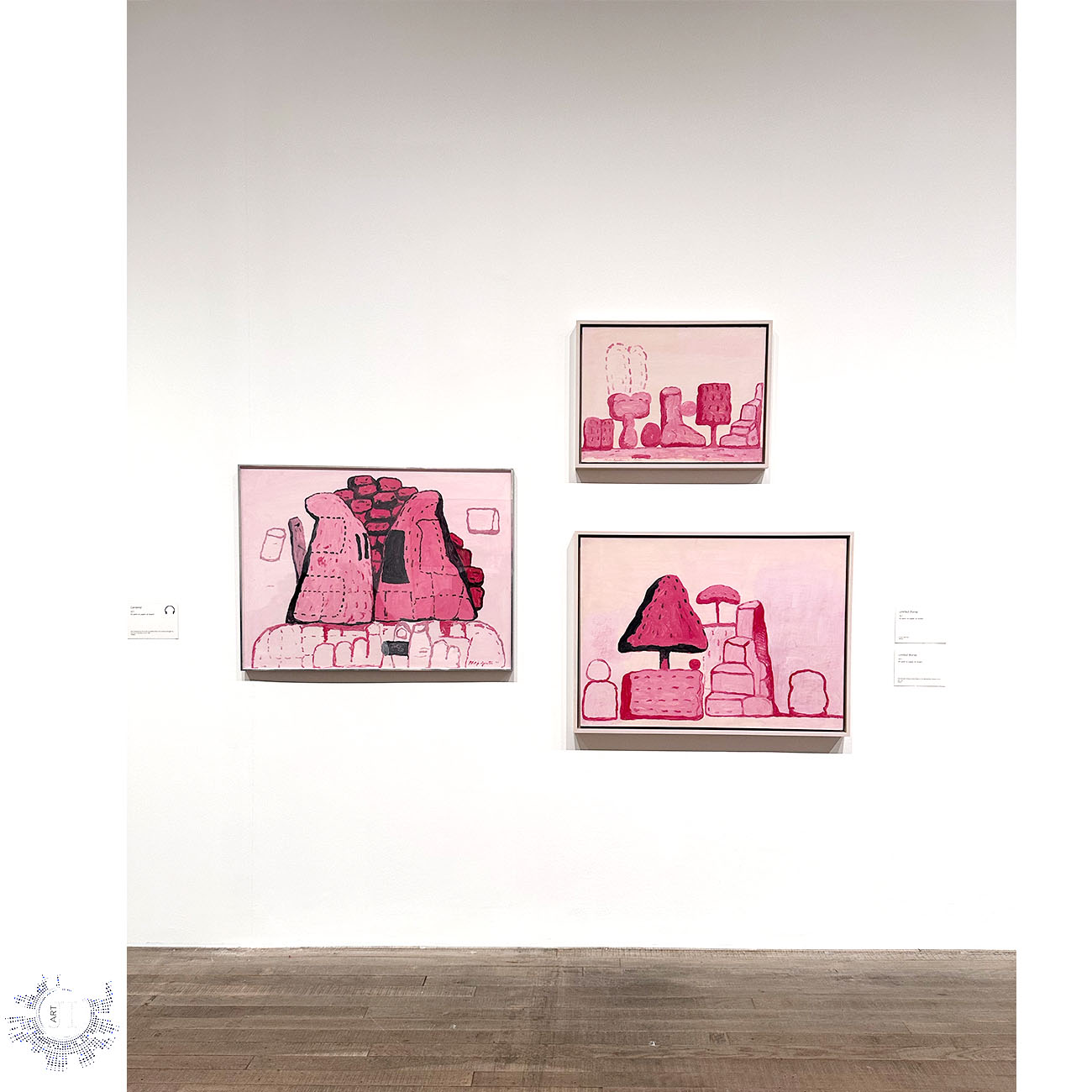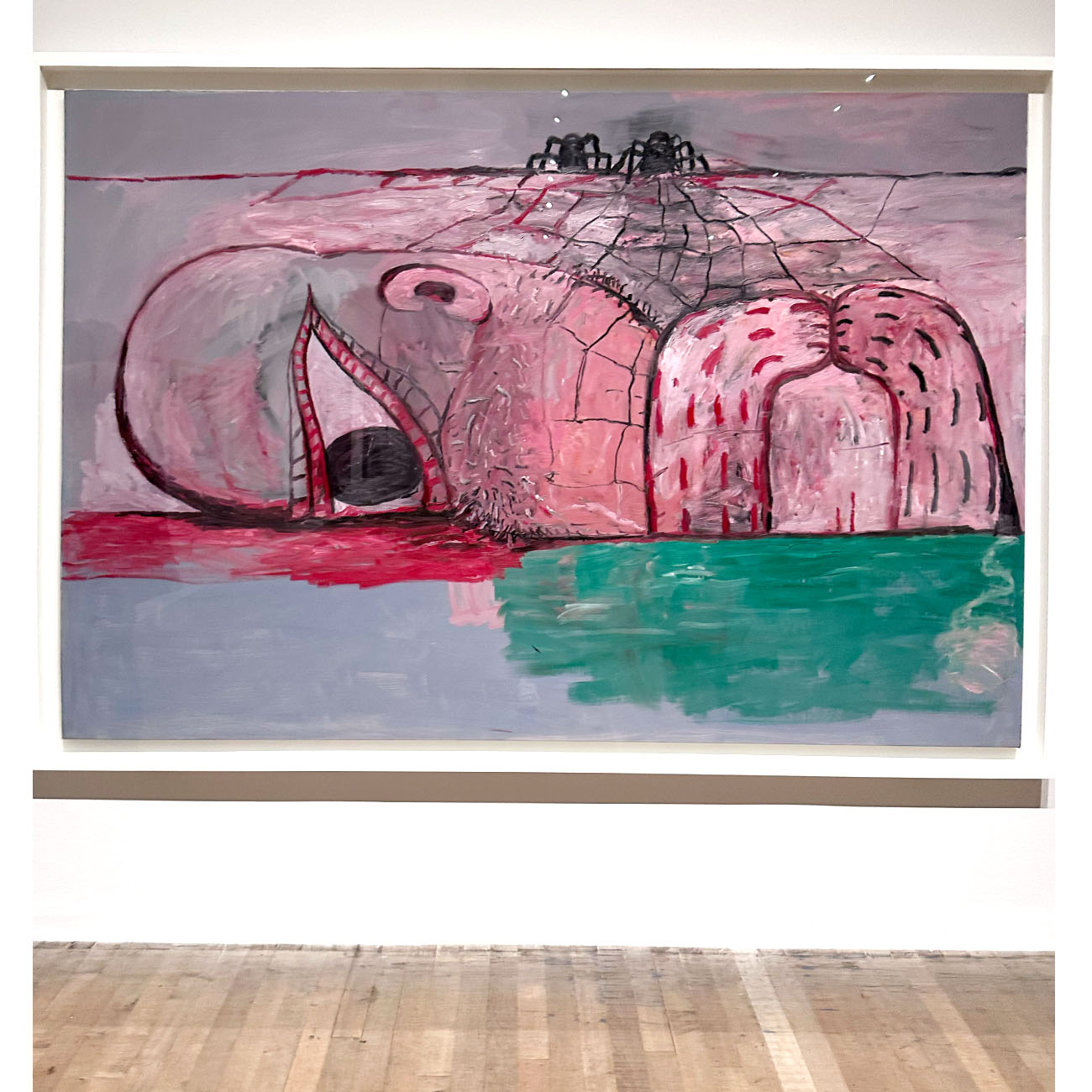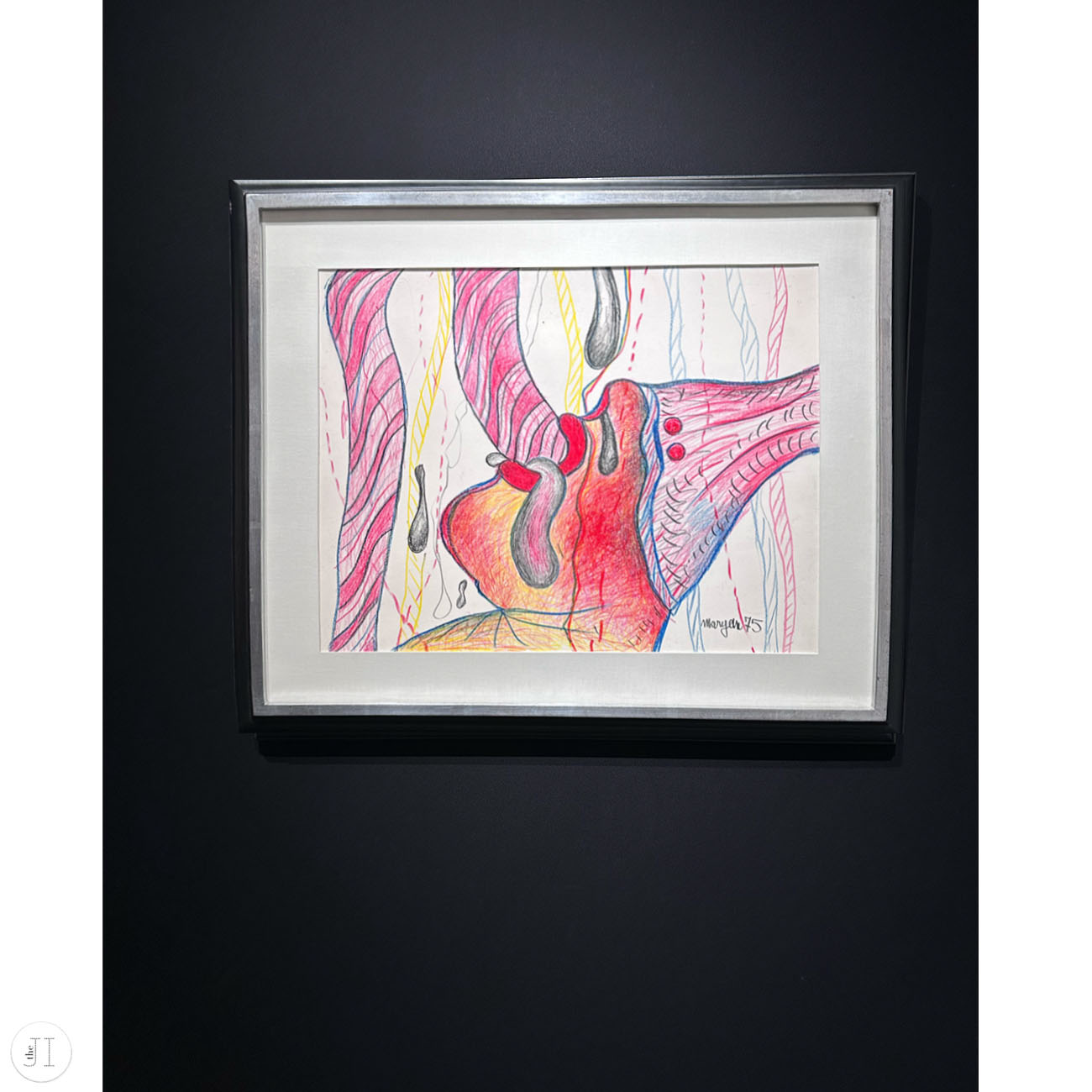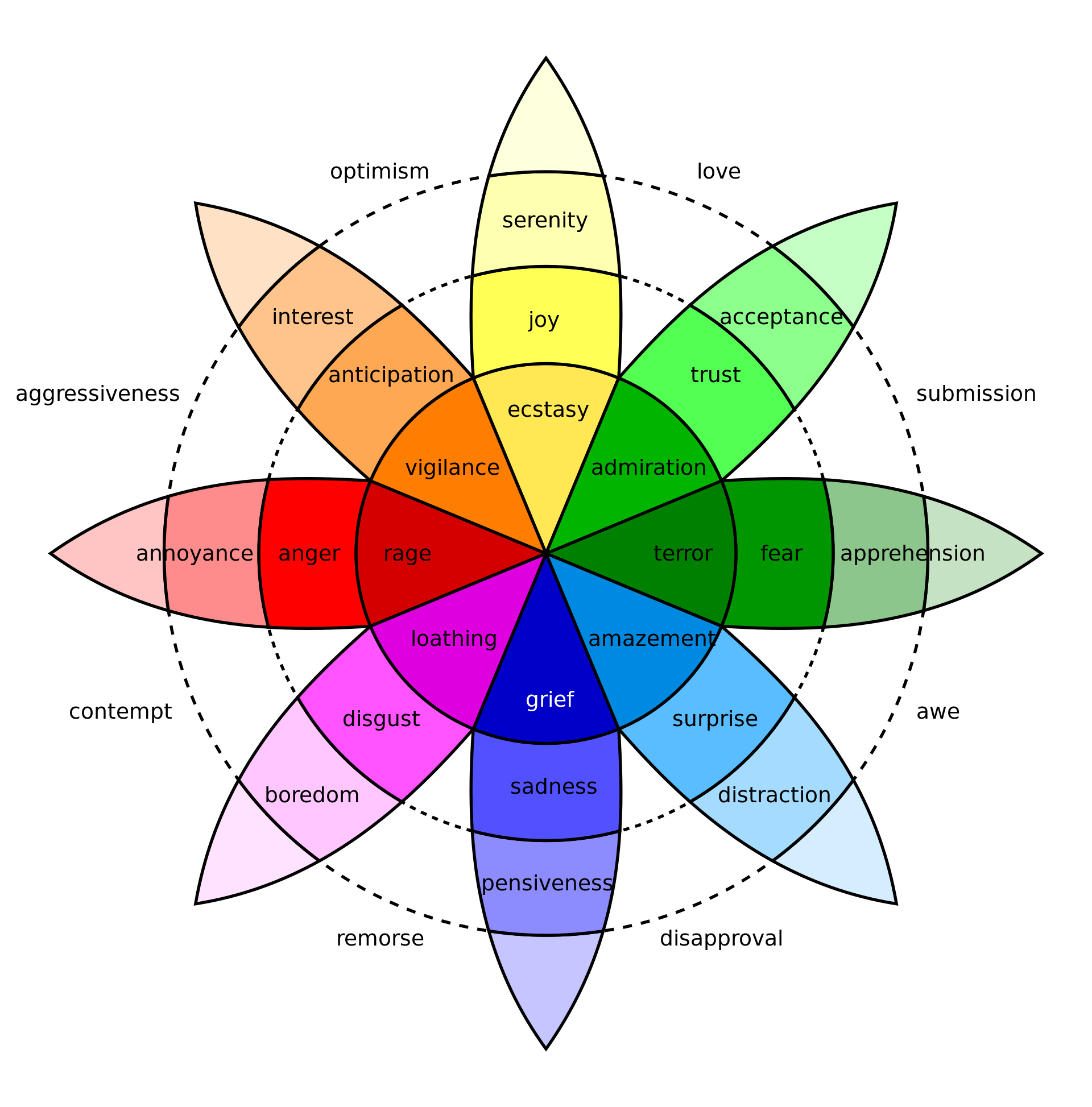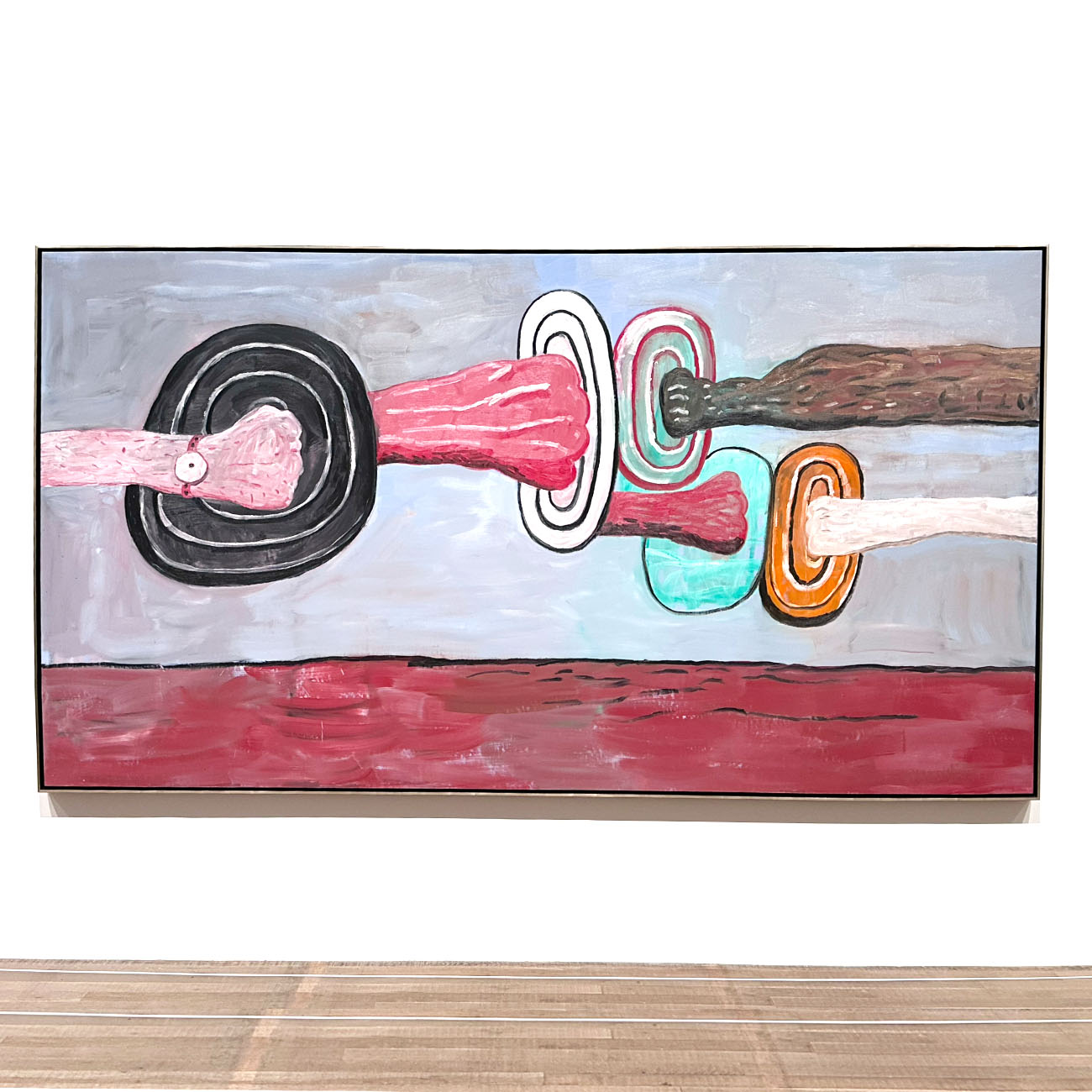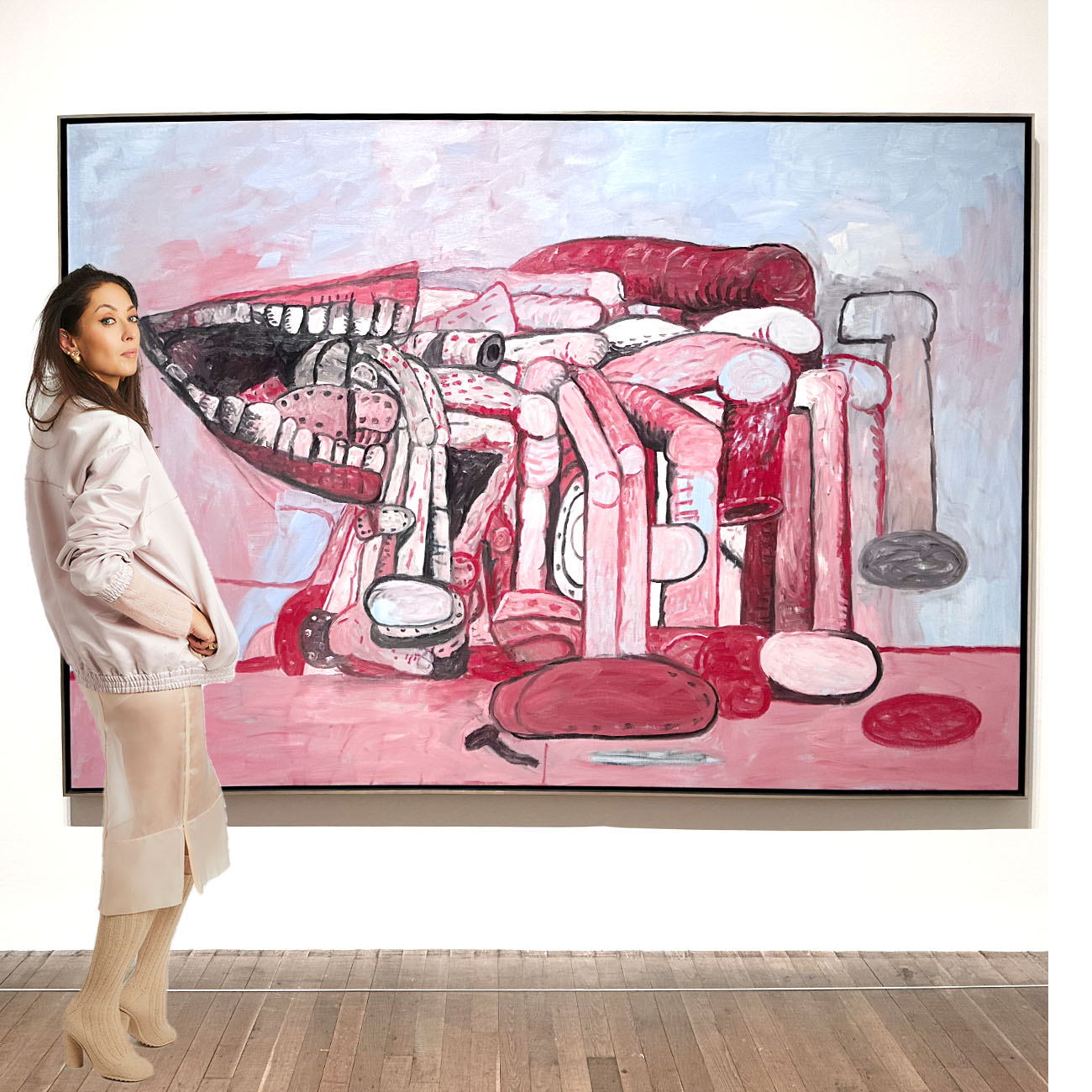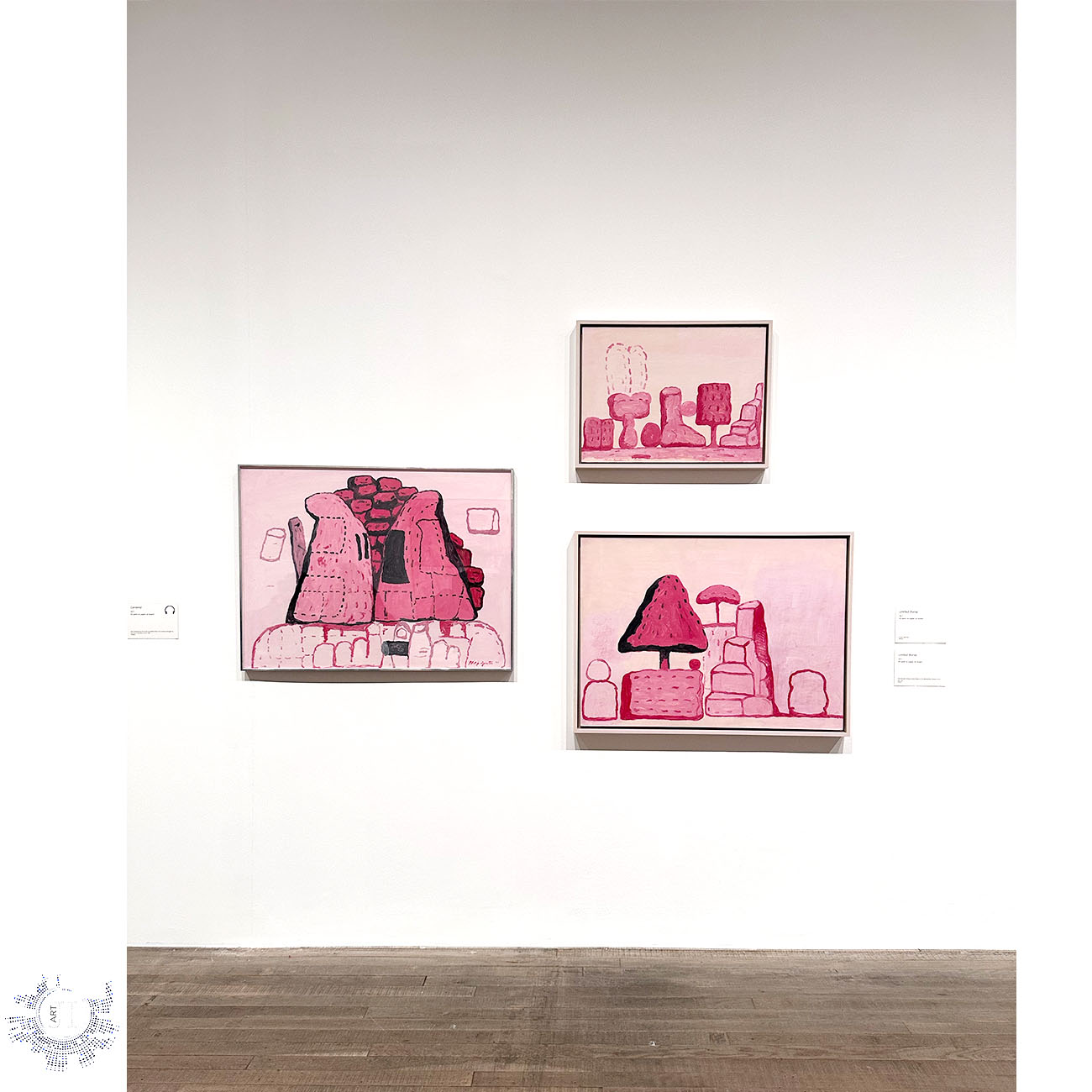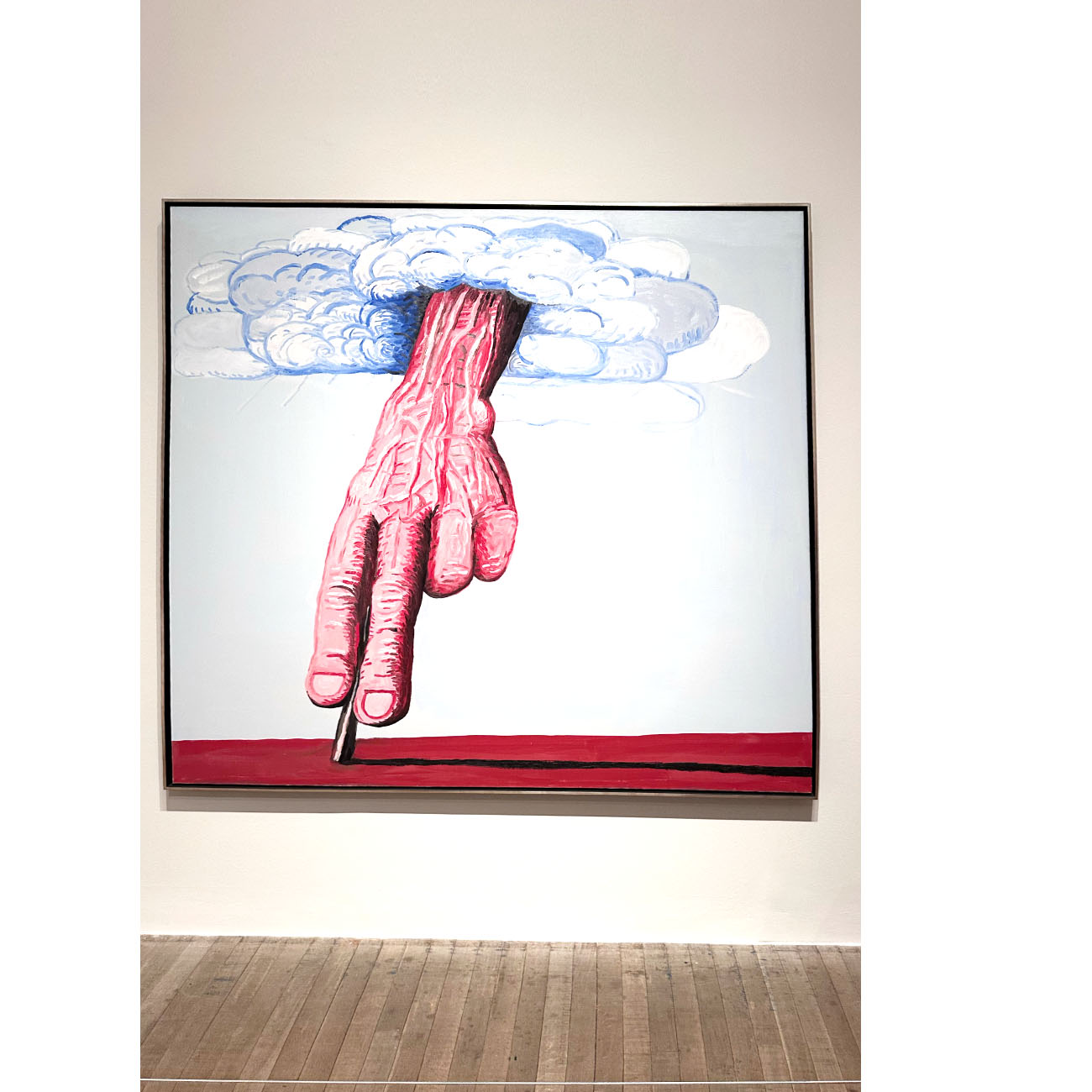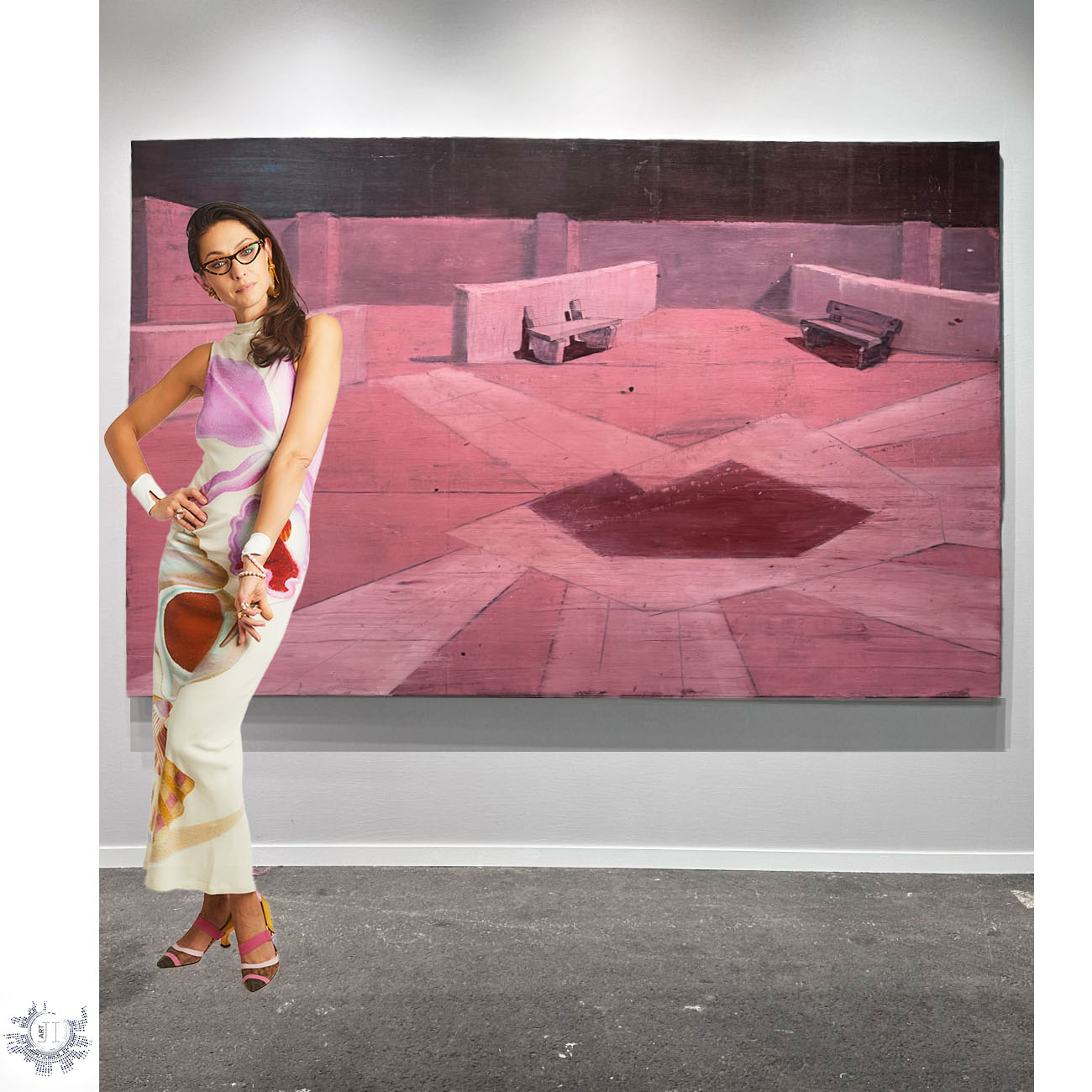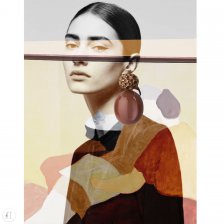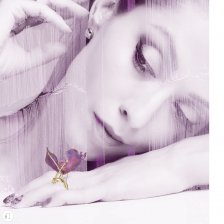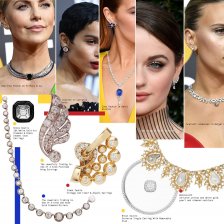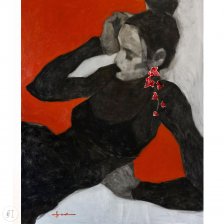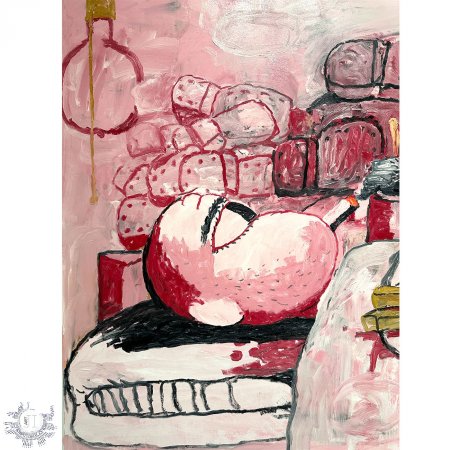TWO PINKS. TWO STORIES.
Browsing the Brussels Art Fair, I found this work by Pinchas Burstein aka Maryan S. Maryan. The pink color hooked me. A very particular pink: familiar, recognizable and, at the same time, rather scary.
Scary, but not aggressive.
Two pseudonyms: Philip Guston (born Phillip Goldstein) and Maryan S. Maryan (born Pinchas Burstein), two lives with lots of pain in them. Guston and Burstein both picked this peculiar pink to transform the pain within and outside them, as an eerie and deceitfully sedating outlet for emotional release.
The Color Wheel of Emotions
The surprising, non-fun and non-bubblegummy character of pink is revealed on the Wheel of Emotions - a conceptual model that illustrates the complex relationships and intensities of human emotions, introduced in 1980 by Robert Plutchik. At its core, the model identifies eight primary bipolar emotions, including contrasts such as joy versus sadness and anger versus fear. On the wheel, green is paired with trust, while pink is paired with loathing, disgust and boredom.
The surprising, non-fun and non-bubblegummy character of pink is revealed on the Wheel of Emotions - a conceptual model that illustrates the complex relationships and intensities of human emotions, introduced in 1980 by Robert Plutchik. At its core, the model identifies eight primary bipolar emotions, including contrasts such as joy versus sadness and anger versus fear. On the wheel, green is paired with trust, while pink is paired with loathing, disgust and boredom.
The Pink of Guston
Philip Guston's art is marked by his signature palette, with pink hues playing a central role, creating a stark contrast against the backdrop of his life's tragedies. This choice of color, particularly his use of pink, transformed his canvases into vivid expressions of emotional depth and complexity, making ordinary scenes resonate with a haunting intensity. Guston's palette, particularly in the latter part of his career, is a unique blend of softness and raw, visceral energy, an unsettling and compelling paradox.
The core of Guston's palette was surprisingly limited, centered around Cadmium Red Medium, Mars Black, Titanium White, Cobalt Blue Light, and Yellow Ochre. This restricted palette necessitated a creative ingenuity, with the preponderance of Cadmium Red Medium mixed with Titanium White giving his works their characteristic pink tone, offset by stark, chunky outlines in black. The resulting effect was fleshy, gummy textures and a grimy, almost sickly sweetness, punctuated by dark seams, creating a dynamic tension within the paintings.
Guston's use of pink and red, often applied in thick, impasto layers and outlined in bold reds or blacks, evoked the rawness of flesh or the starkness of a wound, particularly in his cartoonish figures from the later stages of his career. His daughter, Musa Mayer, noted in her memoir "Night Studio" the legacy of Guston's commitment to this palette: a vast collection of his chosen tubes of paint, “hundreds of tubes of cadmium red medium, mars black, titanium white".
These colors, applied with a heavy hand, were Guston's way of highlighting the absurdity and tragedy of the human condition, making his exploration of suffering, violence, and the absurdity of life all the more poignant and impactful.
The Pink of Maryan S. Maryan
Born in Poland in 1927 to a Jewish family, Pinchas Burstein was the sole survivor of the Holocaust among his family members. His ways led him from Poland to Paris and eventually to New York City, where he adopted the name Maryan S. Maryan.
The traumatic imprint of his wartime experiences is vividly reflected in his art which is marked by a distinctive use of expressionistic figures and raw, emotional intensity.
In the early 1970s, Maryan faced a profound mental health crisis, due to which he temporarily lost his ability to speak. Urged by his psychiatrist to use drawing as a therapeutic outlet, Maryan created an agonizing series of works that revolved around his harrowing life story. This period gave rise to the "Ecce Homo" series: 478 drawings starkly filled with the grotesque and monstrous, reflecting the indelible scars left by his experiences in the concentration camps, characterized by their haunting depictions of incontinent bodies and terror-stricken faces.
Central to Maryan's art are his "characters": a series of single-figure caricatures that he began in the early 1960s, rendered with a peculiar intensity of color and form.
Some of his works feature a distinctive pink hue reminiscent of Guston's palette, adding a layer of visceral impact to the caricatures. This color choice, combined with Maryan's expressionistic style, underscores the profound psychological depth and raw, emotional charge of his work, turning the characters of his paintings into disturbing commentaries on the human condition shaped by unspeakable cruelty and trauma.

